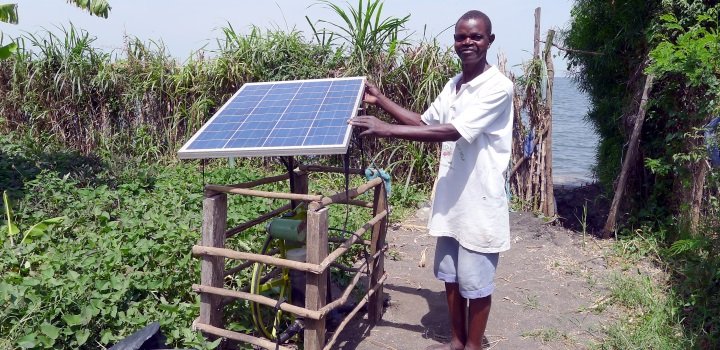More than 1.3m farmers are set to benefit from the Kenya off-grid solar access project which seeks to provide electricity to parts of the country that are not served by the national grid.
The Kenyan Ministry of Energy reports that while national electrification has risen from 23 per cent in 2009 to 75 per cent in 2018, much of these connections have been achieved along the central corridor of the country Mombasa- Nairobi- Lake Victoria, leaving North East and Northern Kenya largely un-electrified.
The Kenya off-grid solar access project (KOSAP) seeks to bridge this gap and targets the counties of West Pokot, Marsabit, Samburu, Isiolo, Mandera, Wajir, Garissa, Tana River, Lamu, Kilifi, Kwale, Taita Taveta and Narok.
The project is a critical plank of the National Electrification Strategy that will ensure universal access to electricity by 2022 and a key aspect of the Vision 2030, Kenya’s long term development plan.
KOSAP is a six year project that started on July 2017 and is expected to end in June 2023. It is jointly implemented by the Ministry of Energy, the Kenya Power and Lighting Company (KPLC) and the Rural Electrification Agency (REA) at a cost of $150m.
It will involve electrification of households, public facilities such as schools and hospitals and businesses through mini-grid systems – implemented by KPLC and REA.
Related content
Nakuru farmers set to use geothermal energy in crop production
Kenyan entrepreneur wins global award for increasing farmers’ yields with solar energy
Biogas heater reduces chicks brooding energy cost to zero

Solar powered irrigation pump. Courtesy
Households will also be electrified through stand-alone solar systems and provision of clean cooking solutions (subsidized six kilogram cooking gas). In this, one household will receive one gas cylinder at a discounted price of Sh2,000 compared to the market price of between Sh3000 to Sh4,000.
According to a report published by the Society for International Development (SID), a total 65 per cent of households in the country use primitive fuels, mostly firewood (64 per cent), as their main source of cooking fuel, followed by transitional fuels, ordinarily charcoal (17.0 percent).
Only six per cent of households use advanced fuels, typically liquefied petroleum gas (five per cent). The use of transitional fuels is seven times more in urban areas than in rural areas. On the other hand, the use of primitive fuels is four times more in rural areas than in urban areas.
Four million people die annually as a result of lung and heart related diseases arising from solid fuels according to the World Health Organization (WHO). In Kenya, the WHO report of 2016 estimates that at least 14,300 people die annually from health conditions arising from indoor air pollution.
Communities will also receive solar water pumps to irrigate their farms boosting food security. According to the Ministry of Agriculture, the country’s irrigation-based farming is still limited. Of the total land area under agriculture(2.9m ha),irrigation accounts for only four per cent but contributes to three per cent of the GDP and provides 18 per cent of the value of all agricultural produce, demonstrating it’s potential in increasing agricultural production and productivity.
The plan in addition involves technical assistance including institutional development, capacity building and project implementation support by the Ministry of Energy.
Access to this energy will help farmers operate machinery and equipment to make animal feeds, light the farm and charge their phones thereby enabling them regularly determine best market prices for their produce by calling/browsing.
















Comments powered by CComment